Remember when fire safety training meant standing in a smoke-filled room with a real extinguisher, hoping you’d remember everything when an actual emergency hit? Those days aren’t gone – but they’re getting a serious upgrade.
Here’s the thing: fire safety training with AI isn’t about replacing the brave men and women who run toward danger. It’s about giving them better tools to prepare for the unpredictable chaos of a real fire scene. And let me tell you, the shift is already happening.
- Why AI Is Reshaping Fire Safety Training?
- OnlineExamMaker: AI-Powered Tool for Creating Effective Fire Safety Assessments
- Realistic Scenario Simulations That Actually Prepare You
- Intelligent Tutoring: Your Personal AI Training Partner
- How to Build Your Fire Safety Assessment in OnlineExamMaker?
- Safety and Ethics: The Serious Stuff We Can’t Ignore
Why AI Is Reshaping Fire Safety Training?
Walk into any modern fire station, and you might spot something unexpected: screens, sensors, and simulation rigs that look like they belong in a sci-fi movie. But this isn’t Hollywood magic. It’s artificial intelligence fire service training, and it’s solving problems that traditional methods couldn’t touch.
Think about it. How do you practice rescuing someone from a collapsing building without, well, actually collapsing a building? How do you train for a chemical fire scenario when setting one up costs thousands and risks actual harm?
AI steps in like a patient instructor who never gets tired, never runs out of scenarios, and never puts anyone in real danger during training.
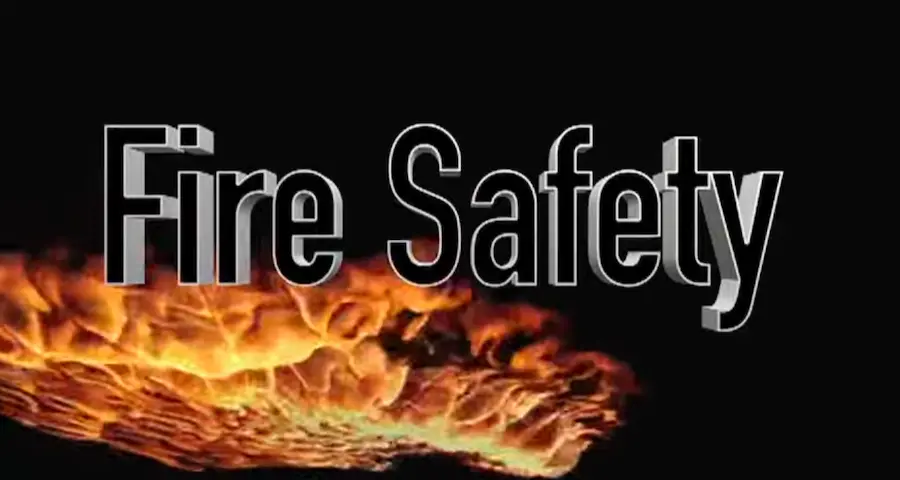
What Makes AI Different?
Traditional training has its place. Nothing replaces the feel of real gear or the weight of an actual hose. But AI-powered fire safety training adds layers that weren’t possible before:
- Endless repetition without wear and tear. Equipment doesn’t break. Facilities don’t need repairs. You can run the same drill fifty times if that’s what someone needs.
- Personalized difficulty curves. New recruit struggling with search patterns? The AI adjusts. Veteran needs a challenge? Crank up the complexity.
- Data that actually means something. Every decision gets tracked. Every hesitation noted. Not to judge, but to improve.
- Scenarios you can’t recreate safely. Nuclear facility fires. Multi-story collapses. Hazmat situations. All possible in virtual space.
OnlineExamMaker: AI-Powered Tool for Creating Effective Fire Safety Assessments
Now, all this high-tech training is fantastic, but you still need to assess whether people actually learned anything. That’s where tools like OnlineExamMaker come into play. Today more and more people create fire safety assessments using AI technologies
OnlineExamMaker a powerful AI-based quiz making tool that can save you time and efforts. The software makes it simple to design and launch interactive quizzes, assessments, and surveys. With the Question Editor, you can create multiple-choice, open-ended, matching, sequencing and many other types of questions for your tests, exams and inventories. You are allowed to enhance quizzes with multimedia elements like images, audio, and video to make them more interactive and visually appealing.
Recommended features for you:
● Prevent cheating by randomizing questions or changing the order of questions, so learners don’t get the same set of questions each time.
● Automatically generates detailed reports—individual scores, question report, and group performance.
● Simply copy a few lines of codes, and add them to a web page, you can present your online quiz in your website, blog, or landing page.
● Offers question analysis to evaluate question performance and reliability, helping instructors optimize their training plan.
Create Your Next Quiz/Exam with OnlineExamMaker
Realistic Scenario Simulations That Actually Prepare You
Here’s where things get interesting. AI-assisted fire safety simulations aren’t just fancy video games. They’re sophisticated environments that respond to your actions in real time.
Picture this: You’re in a VR headset, entering a burning apartment. The smoke moves realistically. The heat sensors in your suit warm up. You hear crackling, shouting, chaos. You make a decision – go left toward the bedroom or right toward the kitchen where you hear someone calling for help.
The AI doesn’t just play out a preset script. It watches what you do. Did you check the door temperature first? Did you call for backup? Did you account for your air supply? Based on your choices, the scenario adapts. Fire spreads differently. Structural integrity changes. Victims react.
This is what we call intelligent fire safety training systems that don’t just test you, but teach you through consequences without the fatal price tag.
The Beauty of Safe Failure
Let’s be honest: You learn more from mistakes than successes. But in firefighting, mistakes can be deadly. AI creates a space where failure is educational, not tragic. Run into a flashover because you didn’t read the smoke? You’ll remember that lesson without the burns.
| Training Method | Realism Level | Safety | Repeatability | Cost Per Session |
|---|---|---|---|---|
| Traditional Live Fire | Very High | Moderate Risk | Limited (wear & tear) | High |
| AI VR Simulation | High | Zero Risk | Unlimited | Low (after initial investment) |
| Classroom Theory | Low | Zero Risk | Unlimited | Very Low |
| AI + Live Fire Hybrid | Very High | Moderate Risk | High | Moderate |
Intelligent Tutoring: Your Personal AI Training Partner
Not everyone learns the same way. Some firefighters are visual learners. Others need hands-on repetition. A few grasp concepts after one explanation. Machine learning fire service training recognizes these differences.
The system watches how you perform. Struggling with ventilation tactics? It’ll serve up more scenarios that focus on that skill, gradually increasing difficulty as you improve. Nailing search and rescue but weak on hazmat protocols? Your training path adjusts.
This isn’t some distant future, it’s happening now. AI for firefighter training platforms track hundreds of performance metrics: reaction times, decision accuracy, communication clarity, safety protocol adherence. Then they build custom learning journeys.
Feedback That Actually Helps
Remember getting debriefed after a drill and hearing “good job” or “needs improvement”? Not exactly actionable, right?
AI changes this completely. After a simulation, you get specific feedback: “At minute 3:42, you entered the structure without confirming your exit route. This violated safety protocol 7-B. Here’s what you should have done.” Paired with video replay, this kind of targeted coaching accelerates improvement exponentially.
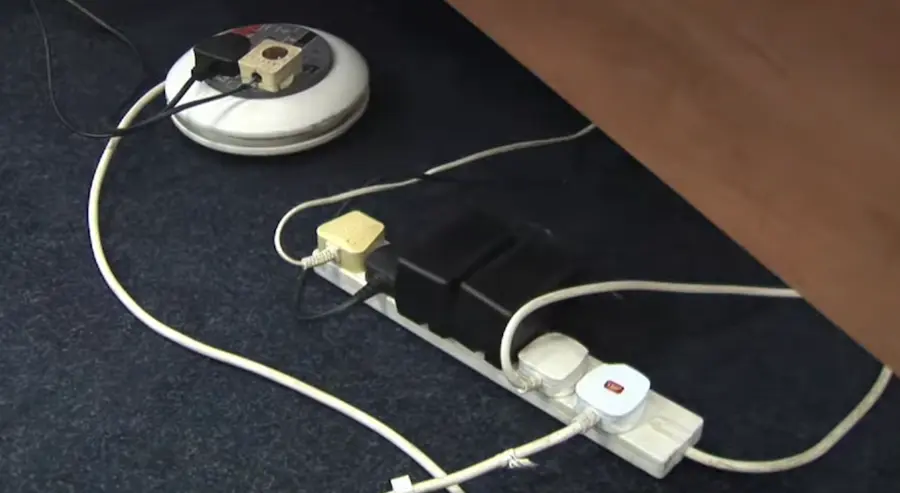
Data-Driven Debriefs: Learning from Every Drill
Here’s something most people don’t think about: Every training session generates valuable data. Problem is, traditional training can’t capture much of it. Someone takes notes. Maybe there’s video. But analyzing dozens of trainees across hundreds of drills? Impossible without help.
AI risk assessment for fire safety changes this equation entirely. Every action, every communication, every decision gets logged and analyzed. Not to create a “gotcha” culture, but to identify patterns that improve everyone’s performance.
Did three different trainees make the same navigation error in a specific building layout? That’s not coincidence – that’s a design flaw or training gap the AI caught. Is one team consistently faster at establishing water supply? The system can identify what they’re doing differently and share those techniques.
Predictive Analytics That Save Lives
This is where predictive analytics in fire safety training gets really powerful. By analyzing thousands of training scenarios and real incident data, AI can identify which training gaps correlate with poor real-world outcomes.
Maybe the data shows that firefighters who struggle with a specific VR scenario also have difficulty in similar real incidents. That insight lets departments focus training resources where they’ll have maximum impact.
AI-Assisted Incident Command Training
Leading a fire scene is like conducting an orchestra during an earthquake. You’re managing personnel, equipment, civilians, and rapidly changing conditions – all while making life-or-death decisions under pressure.
AI in emergency response training creates incident command scenarios that would be impossibly expensive to stage in real life. Multiple alarm fires. Mass casualty events. Coordinated responses across agencies.
The AI acts as every role you’re not playing: firefighters reporting in, dispatch providing updates, civilians needing assistance, other agencies requesting coordination. It tests not just your technical knowledge, but your communication, leadership, and resource management under pressure.
And here’s the kicker: The AI can simulate personnel with different skill levels, equipment failures, unexpected complications – all the chaos of a real incident without the actual stakes.
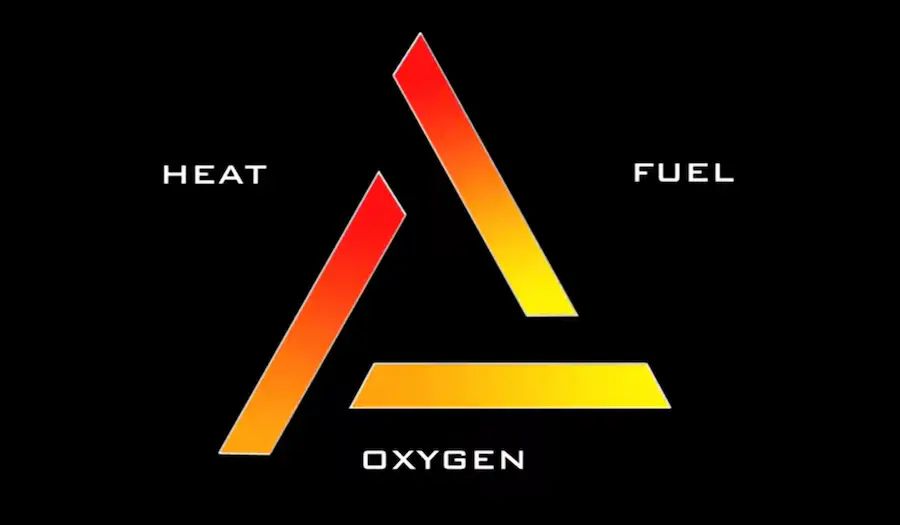
How to Build Your Fire Safety Assessment in OnlineExamMaker?
OnlineExamMaker is an assessment maker software that lets you create comprehensive fire safety training evaluations without needing a computer science degree. Here’s how fire departments are using it:
Create Your Next Quiz/Exam with OnlineExamMaker
Set up your question bank
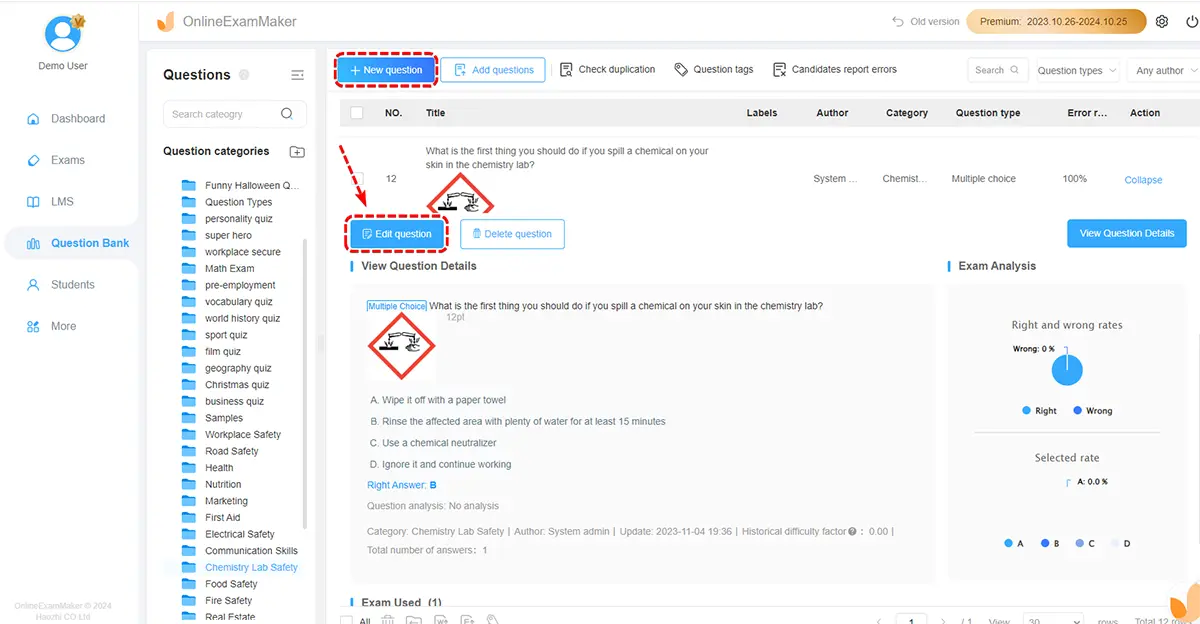
Start by creating questions that cover all aspects of your AI training: scenario decisions, safety protocols, equipment knowledge, and incident command principles. Mix question types – multiple choice for knowledge checks, scenario-based questions for decision-making, and video questions showing simulation clips.
Integrate multimedia elements
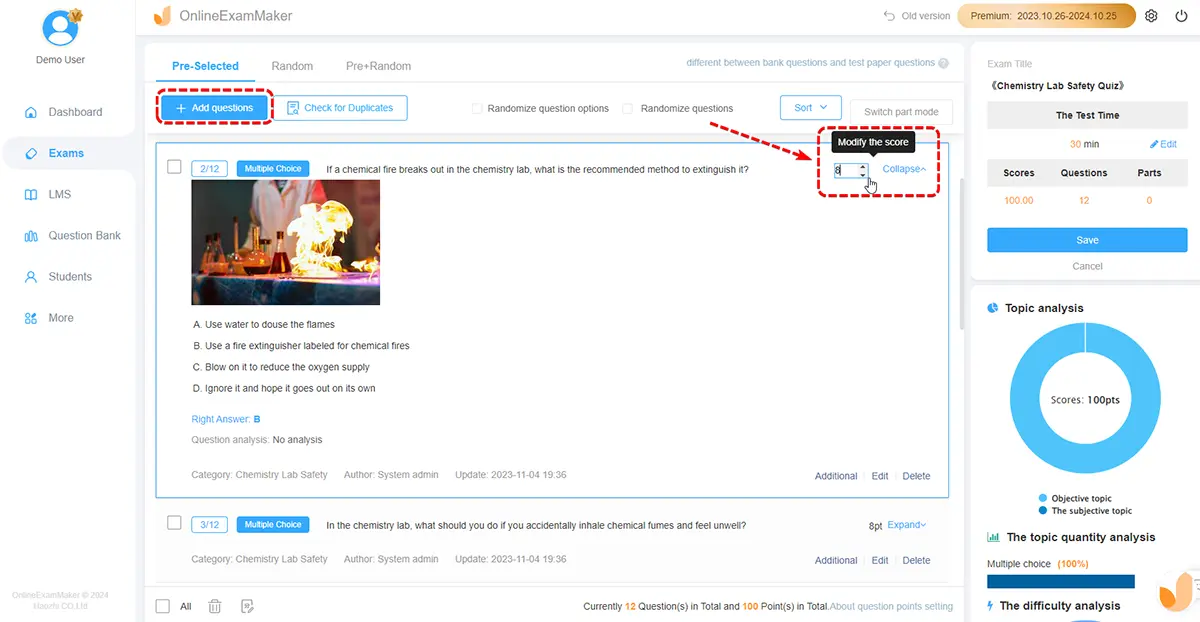
Upload screenshots or video clips from your AI simulations. Ask trainees to identify hazards, critique decisions, or explain what they’d do differently. This bridges the gap between virtual training and knowledge assessment.
Set up a fire safety assessment

Go to OnlineExamMaker exam management channel, click “New exam” button to create a new exam about fire safety. After you edit the exam title and description, you can add questions from Question Bank to set up an assessment.
Set performance benchmarks
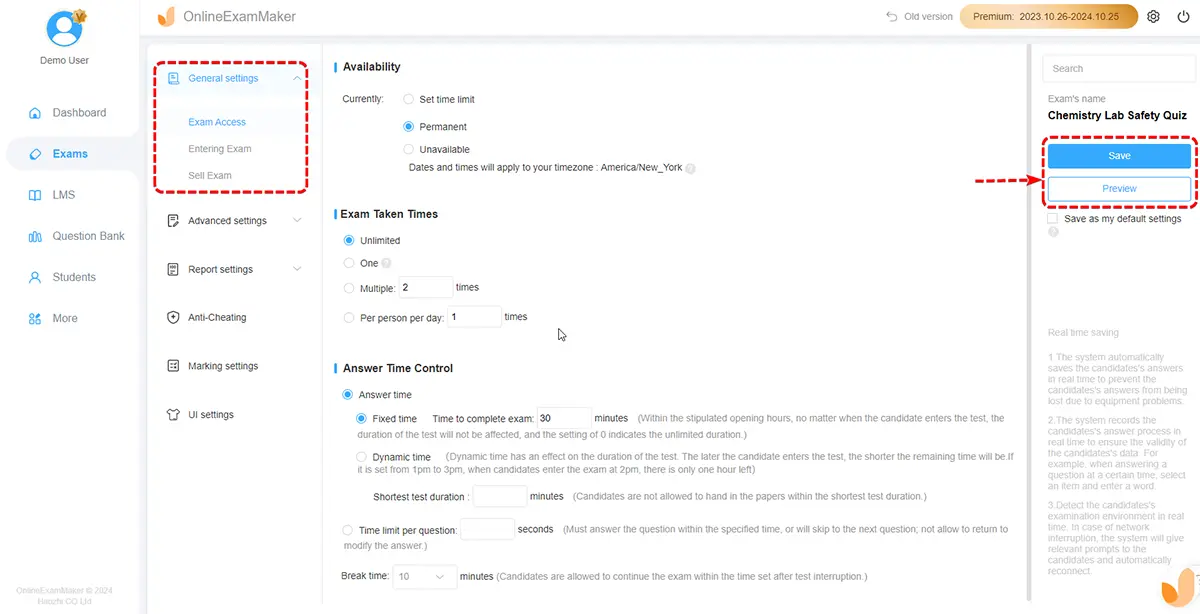
Create different passing standards for recruits versus veterans. Include time limits that simulate the pressure of real decision-making.
Generate detailed analytics
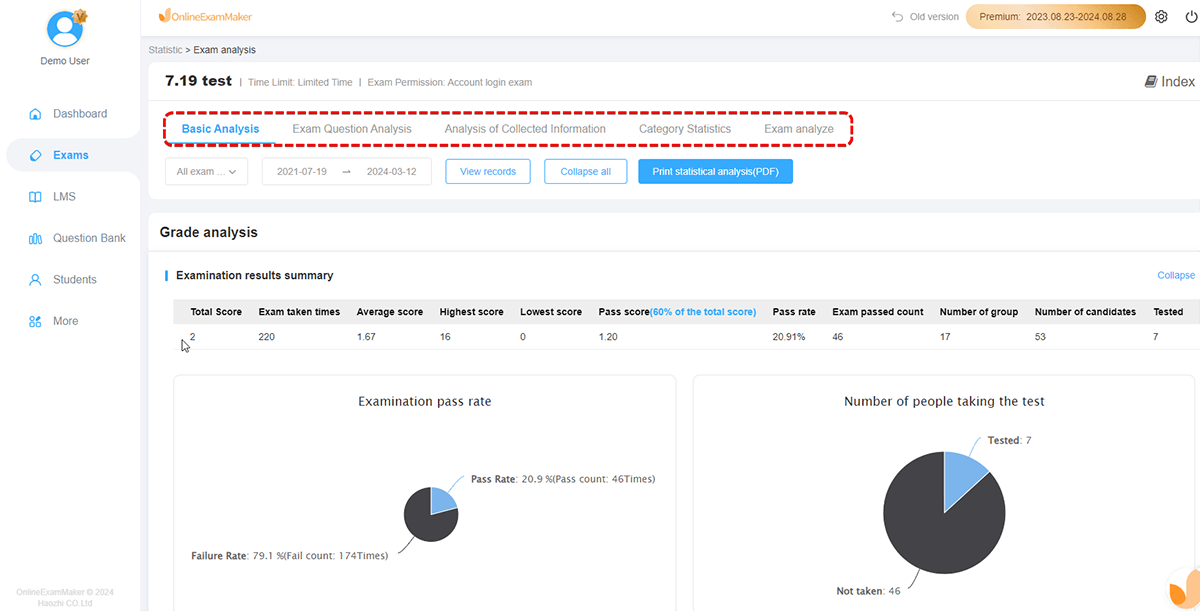
After assessments, OnlineExamMaker provides data on which questions most people miss, how long decisions take, and where knowledge gaps exist. This feeds back into your AI training priorities.
Pro Tip: Use OnlineExamMaker to create post-simulation quizzes that firefighters take immediately after AI training sessions. This reinforces learning while memories are fresh and helps identify what actually stuck versus what seemed clear in the moment.
Remote and Integrated Training Solutions
AI doesn’t just live in VR headsets. Intelligent training systems for fire protection are expanding into unexpected areas:
- Drones for aerial assessment training. AI-powered drones create 3D maps of fire scenes. Trainees learn to interpret this data for better tactical decisions.
- Robotic assistants for hazmat scenarios. Control AI-guided robots in contaminated environments, learning remote operation skills that keep humans safer.
- AI chat assistants for on-demand learning. Got a question about a specific protocol at 2 AM? Ask the AI training assistant instead of waiting for the next shift meeting.
- Mixed reality on-site training. Overlay AI-generated fire scenarios onto real buildings using AR glasses. Practice in your actual response area without setting anything on fire.
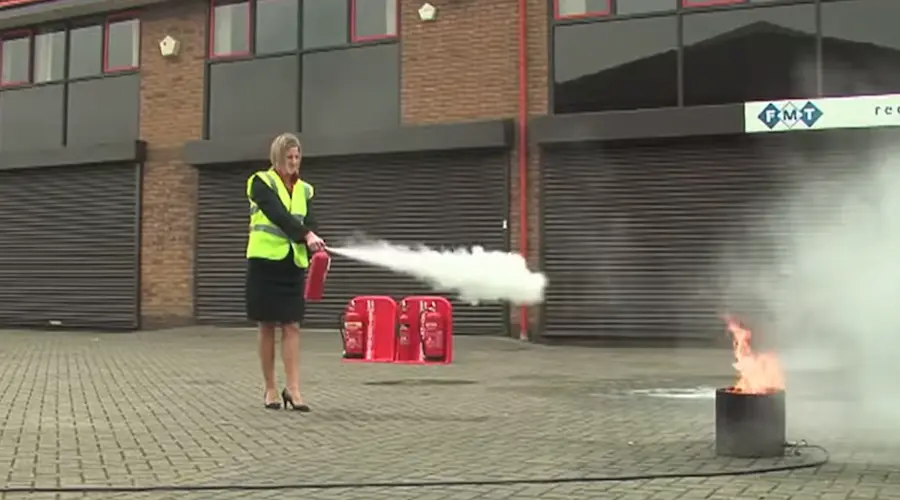
The Cost-Benefit Reality Check
Let’s talk money, because no department has unlimited budgets. Yes, AI-driven training modules for fire departments require upfront investment. Quality VR rigs aren’t cheap. Software licenses cost money. Initial setup takes time.
But here’s the math that’s convincing fire chiefs:
- Reduced equipment wear. One department calculated they were saving $40,000 annually in training prop repairs alone.
- Fewer training injuries. When trainees make mistakes in VR instead of live fire, medical costs plummet.
- Better real-world outcomes. Departments using AI training report faster decision-making and fewer protocol violations during actual incidents.
- Recruitment and retention. Modern training tools attract tech-savvy recruits and keep experienced firefighters engaged with new challenges.
Most departments find their AI training systems pay for themselves within 2-3 years, then continue delivering value for a decade or more.
Safety and Ethics: The Serious Stuff We Can’t Ignore
Here’s where we need to pump the brakes and talk about concerns. AI in fire safety training isn’t all upside. There are legitimate questions we need to address:
Data Privacy Matters
AI systems collect detailed performance data on individual firefighters. Who has access to this? How long is it stored? Can it be used in personnel decisions? Departments need clear policies that protect both organizational needs and individual privacy.
Bias in Training Data
If your AI system was trained primarily on data from urban departments, will it properly prepare rural firefighters? If historical data reflects biased evaluation practices, will the AI perpetuate those biases? These aren’t hypothetical concerns – they’re real issues requiring ongoing vigilance.
The Overreliance Risk
AI is a tool, not a replacement for human judgment. There’s a real danger that firefighters might defer too much to AI recommendations instead of trusting their trained instincts. The goal is augmented intelligence, not artificial replacement.
Transparency Requirements
When an AI system suggests a specific training path or identifies a performance issue, firefighters deserve to understand why. Black-box algorithms that can’t explain their reasoning create distrust and reduce effectiveness.
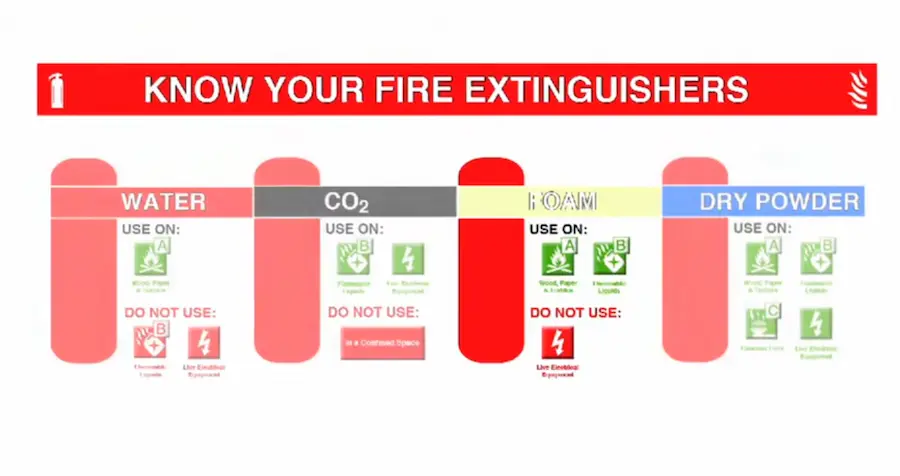
The Future Is Already Here
Look, I’m not going to tell you that AI will solve every training challenge. It won’t. Nothing replaces the mentorship of experienced firefighters, the camaraderie built during tough drills, or the irreplaceable lessons learned from actual incidents.
But AI-powered fire safety training is adding capabilities that simply weren’t possible before. Safe failure. Unlimited repetition. Personalized learning. Data-driven improvement. Scenarios too dangerous or expensive to create any other way.
The departments embracing these tools aren’t abandoning tradition – they’re honoring it by giving their people the best possible preparation for the worst possible days.
The fire service has always been about innovation in service of saving lives. From leather buckets to steam pumpers to modern turnout gear, the job evolved because firefighters adopted better tools. AI is just the latest chapter in that story.
And honestly? After seeing these systems in action, watching trainees gain confidence through safe practice, seeing data identify improvement opportunities that would’ve been invisible otherwise – I’m convinced this evolution is one of the most important developments in fire service training in decades.
The smoke is clearing on what’s possible. The future of fire safety training isn’t just smarter. It’s saving lives before the alarm even sounds.